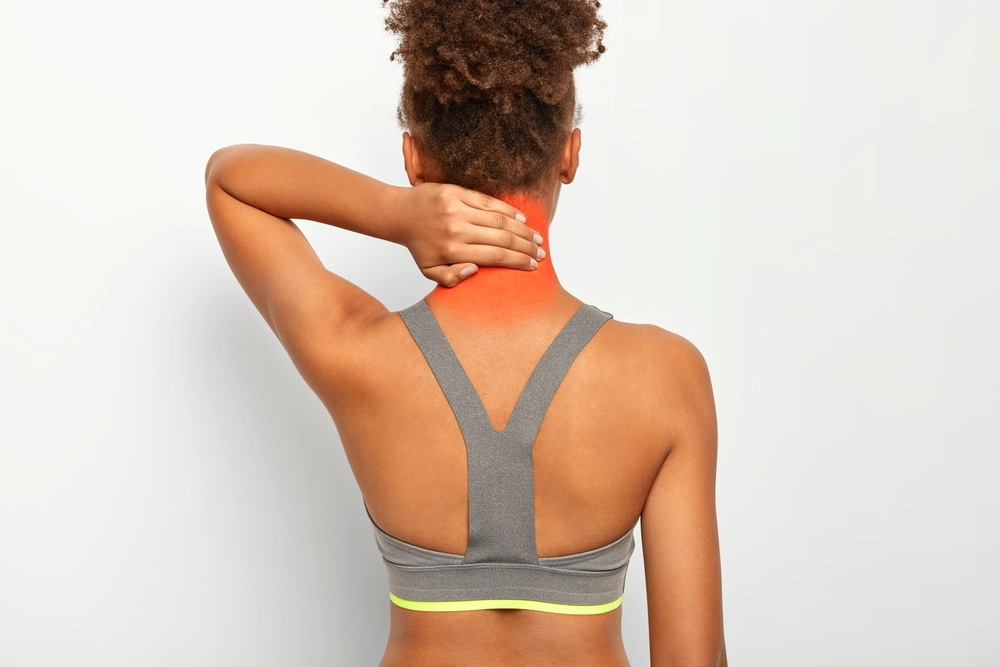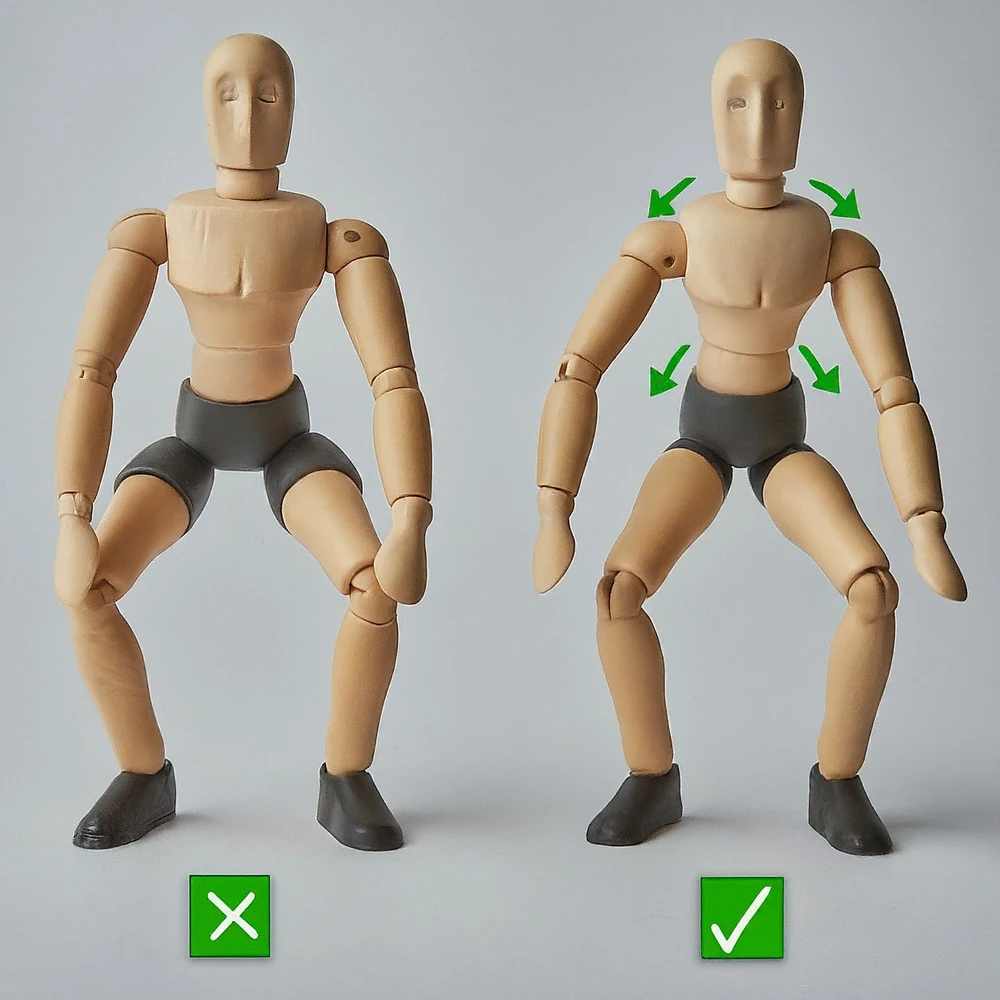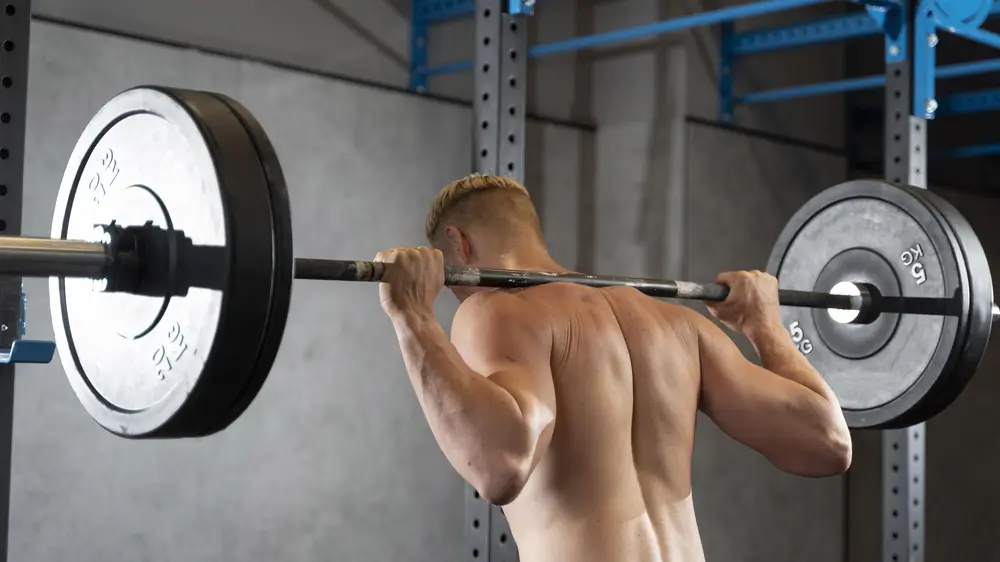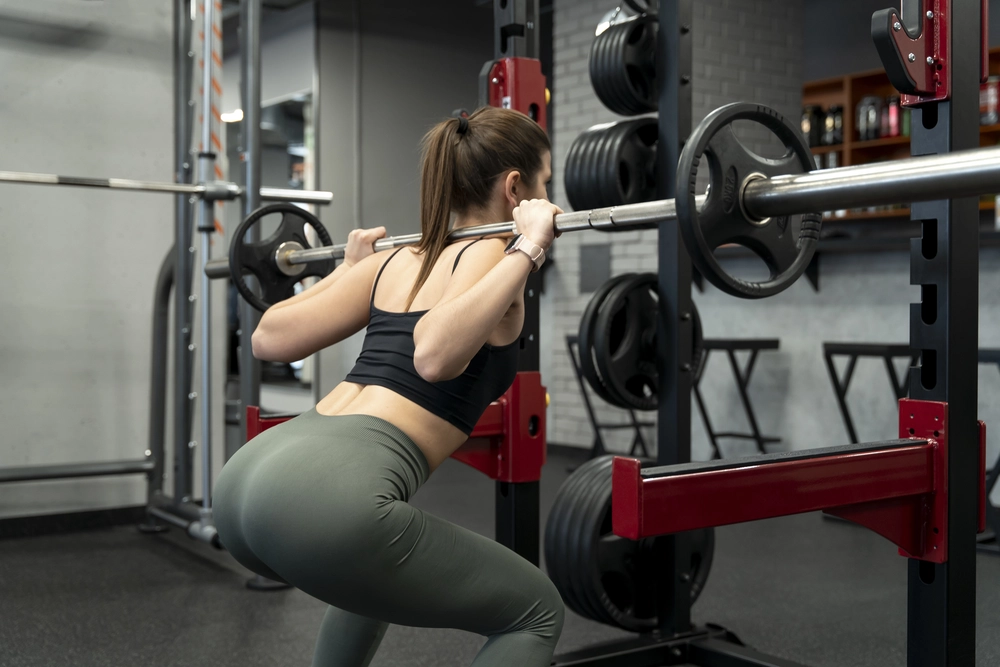“Back lumps after squats can be concerning. They often result from improper squat form, excessive weight, or muscle strain. Understanding the different types of lumps like weightlifter’s nodules, lipomas, or muscle knots, is key to proper treatment. Rest, ice, stretching, and core strengthening can all play a role in managing and preventing these lumps.”
Have you ever finished a squat session only to discover a mysterious lump on your back? It is a common occurrence. Understanding why it happens and how to deal with it can make all the difference. Let’s delve deeper into this issue and explore comprehensive strategies for prevention and treatment.

Understanding Squat Mechanics and Potential Risk Factors
Squats are a cornerstone exercise for building lower body strength and muscle mass. However, improper form and excessive weight can strain the muscles and tissues of the back. That leads to the development of lumps. Here is a closer look at the risk factors.
Proper squat form involves maintaining a straight back, engaging the core, and ensuring the knees track over the toes. Deviations from this form can place undue stress on the back muscles. For example, rounding the back or allowing the knees to cave in, can increase the pressure on the spine and surrounding muscles.

Furthermore, pushing beyond your limits by attempting to lift weights that are too heavy for your current strength level. That can lead to micro-tears and inflammation in the muscles, resulting in lumps. It is essential to progress gradually and listen to your body’s signals in order to avoid overloading the back muscles.
Incorrect placement of the squat bar is another common risk factor. Placing the bar too high or too low on the back can alter the distribution of stress and contribute to lump formation. Ideally, the bar should rest comfortably across the mid-trapezius muscles, just below the base of the neck.
If the bar is positioned too high, it can place excessive pressure on the cervical spine and upper back. That leads to discomfort and potential lump development. Conversely, placing the bar too low on the back can increase the strain on the lower back and cause similar issues.
Additionally, a weak core compromises spinal stability during squats, increasing the risk of strain on the back muscles. The core muscles, including the abdominals, obliques, and lower back muscles, play a crucial role in supporting the spine and maintaining proper posture during squats.
Weakness or imbalance in these muscles can result in poor form and increased susceptibility to injury. Therefore, incorporating core-strengthening exercises into your routine can help improve stability and reduce the risk of back lumps.

Different Types of Lumps and Their Characteristics
Not all lumps are created equal. Understanding the characteristics of different types of lumps can help in proper diagnosis and treatment.
Weightlifter’s Nodules are firm, painless lumps that typically develop on the upper back where the squat bar rests. They result from repetitive micro-trauma and inflammation. Lipomas, on the other hand, are soft, movable lumps composed of fatty tissue. They are usually benign and painless. Muscle Knots or Trigger Points are tight. Sensitive areas within muscles that can cause localized pain and stiffness. These knots often develop due to overuse, poor posture, or muscle imbalances.
In addition to these common types, less frequent causes such as abscesses, cysts, or tumors may also present as lumps on the back. These require thorough evaluation and treatment by a medical professional.
Treatment Options for Different Lumps
Tailoring treatment to the specific type of lump is essential for effective management.
For Weightlifter’s Nodules, rest, ice, and anti-inflammatory medication can help alleviate symptoms. In severe cases, corticosteroid injections or surgical removal may be necessary. Lipomas often require no treatment unless the lump causes discomfort or interferes with movement. Surgical excision may be considered for cosmetic reasons or if the lipoma interferes with adjacent structures.
Muscle Knots or Trigger Points can be addressed with self-massage, stretching, and heat therapy. Professional massage therapy or trigger point injections may be beneficial for persistent knots. For less common causes such as abscesses or tumors, treatment should be guided by a medical professional and may include antibiotics, drainage, or surgical excision, depending on the diagnosis.
Prevention Strategies for Back Lumps from Squats

- Prevention is key to avoiding back lumps and maintaining overall back health.
- Focus on mastering proper squat form and technique.
- Work with a qualified trainer or physical therapist to ensure your form is correct and minimize the risk of injury.
- Gradually increase weight and intensity to avoid overexertion and allow your muscles to adapt to the workload.
- Incorporate core-strengthening exercises into your routine to improve stability and support your spine during squats.
- Exercises such as planks, bridges, and bird dogs can target the core muscles effectively.
- Warm up adequately before squatting to prepare your muscles for exercise and reduce the risk of injury.
- A dynamic warm-up routine that includes movements such as leg swings, hip circles, and bodyweight squats can help increase blood flow and flexibility.
- Listen to your body and avoid pushing through pain or discomfort during squats.
- If you experience any unusual symptoms, such as persistent pain, swelling, or lumps, seek medical attention promptly.
Conclusion
Discovering a lump on your back after squats can be concerning, but armed with knowledge, you can address the issue effectively. By prioritizing proper form, listening to your body, and seeking professional guidance when needed, you can minimize the risk of back lumps and continue to enjoy the benefits of squats safely.
Remember, always consult with a healthcare professional for personalized advice and treatment. With proper prevention and treatment strategies in place, you can maintain a healthy and strong back for years to come.
Q&A about Lumps and Pain After Squats
1. Why do I have a lump behind my neck after squats?
Lumps behind the neck after squats are less common than back lumps but can occur due to improper form. Straining your neck by looking up excessively or holding tension there can lead to muscle knots or trigger points, which feel like lumps and can cause pain. Ensure proper head and neck position during squats, looking slightly forward with a neutral spine.
2. Why do I get a lump in my leg after squats?
Lumps in the leg after squats could be several things. Muscle knots or trigger points, similar to those in the neck, are a possibility. Liposomes, benign fatty lumps, can also occur anywhere on the body, including legs. If the lump is painful or growing rapidly, consult a doctor for diagnosis.
3. Is it okay to feel squats in your back?
Feeling some engagement in your lower back during squats is normal and even desirable for proper form. However, pain or discomfort in the back is not okay. This could indicate improper form, muscle imbalances, or pre-existing conditions. Focus on core engagement, proper weight distribution, and seek professional guidance if you experience back pain.
4. Does back pain from squatting go away?
Mild back pain from squats might subside with rest, proper form adjustments, and stretching. However, persistent or worsening pain warrants a doctor’s visit. They can diagnose the cause and recommend appropriate treatment, including physical therapy or adjustments to your squat routine.
5. Why do I have a lump in my lower back after exercise?
Lumps in the lower back after exercise could be similar to the ones mentioned above: muscle knots, trigger points, or even lipomas. Consulting a doctor for diagnosis and treatment is crucial, especially if the lump is painful, growing, or accompanied by other symptoms like redness or fever.
Read more here